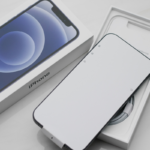Laptops are compact enough to carry with you, yet powerful enough to run advanced applications. A laptop is the perfect device for serious work or play, whether at home, traveling, or in a college class. Whether browsing the web, typing a research paper, working on a video production, or playing the best PC games, it can all be done better on a laptop. But the question is, what should be considered when buying a laptop?

We’ve put together this laptop-buying guide to help you out.
Laptops are available in different sizes, features, and prices, which makes choosing the best laptop difficult. So you have to determine your needs first.
Short points
Why can you trust Laptop Mag?
Our expert reviewers spend hours testing and comparing products and services to make the best choice for you.
- 12.5- to 14-inch screens provide the best balance between usability and portability. Larger screens are for people who don’t travel much, and smaller models are perfect for children.

If you’re spending more than $700, look for at least these features:
CPU:
Intel Core i5/Core Ultra 5, AMD Ryzen 5, Qualcomm Snapdragon X Plus, Apple M2

Screen resolution:
1920 x 1080

RAM: 8GB
Storage:
128GB SSD

For over $1,000 look out for these features:
CPU:
Intel Core i7/Core Ultra 7, AMD Ryzen 7, Qualcomm Snapdragon X Elite, Apple M3
Screen resolution:
1920 x 1200
RAM:
16GB
Storage:
256GB SSD
• 11-hour battery life is ideal if you often work away from a power socket.
• Consider 2-in-1 laptops if you want to use the laptop as a tablet, otherwise a standard clamshell notebook is a better choice.
• Chromebooks are great for kids, students, or secondary laptops, and their functionality continues to grow. If you need powerful software and hardware, then Windows 11 laptops and MacBooks are the best options.
Choose a platform:
Windows, MacOS, or ChromeOS.

Depending on your needs, this may be an easy choice, but if you are not committed to a particular platform, this decision can be difficult. The pros and cons of each platform are summarized below:
Windows 11 (or Windows 10).
• Most flexible operating system, available with different price points and features.
• It is perfect for students, researchers, and business users, and is also the only choice for playing games.
MacOS
• All MacBooks come with Apple macOS Sequoia.
• This platform offers unique features, but the lack of touchscreen is a major drawback.
Chrome OS
• Simple and safe but limited.
• Best for schools and light work, but the performance improvements of recent Chromebooks have expanded its use cases.
Do you want a 2-in-1 laptop?

2-in-1 laptops can switch between traditional and tablet mode. If you just want to use a laptop, buy a standard clamshell laptop.
Choose the right size
Laptops are generally available in the following sizes:
- 11 to 12 inches: more portable.
- 13 to 14 inches: Best balance.
- 15 to 16 inches: For a larger screen.
- 17 to 18 inches: More powerful, as a desktop alternative.
Check the keyboard and touchpad
Be sure to check the keyboard’s tactile feedback, keyspace, and touchpad accuracy.
Choose the specs according to your needs
• CPU: Consider modern processors from Intel, AMD, or Apple M series.
• RAM: Minimum 8GB, 16GB for better performance.
• Storage: Prefer SSD. • Screen resolution: at least 1920×1080.
Don’t compromise on battery life
Look for at least 8 hours of battery life, but 10 hours or more is better.
Plan according to the budget
• $150 to $250: Chromebooks for basic tasks.
• $350 to $600: Intel Core i5 or AMD Ryzen 5000 for better performance.
• $600 to $900: Premium design and high performance.
• Over $900: More portable, powerful, and high quality
Pay attention to the brand
Brand selection is important for good technical support and quality. Apple, Razer, and Lenovo are among the best brands.
How to Choose the Best Gaming Laptop – Intel

Buying a laptop can be a big decision, and there are countless options to choose from. This guide will walk you through the basics and help you find the best gaming laptop.
When choosing a new gaming laptop it can be difficult to know where to start. There are several features to consider, such as the display, design, battery life, and of course, the components that power the laptop.
It’s not usually possible to upgrade a gaming laptop with new hardware, so it’s important to plan ahead and think about how you want to use your system. A great first step is to prioritize the features that are most important to you.
We will discuss all these aspects in detail, but let’s start with the basics.
Choosing the Best Gaming Laptop: Key Features
Display: Screen size, resolution, and refresh rate can affect your gaming experience. Do you prefer a high-resolution or high refresh rate screen, or do you plan to use an external monitor?
• CPU and GPU: Compare specifications such as processor core count and clock speed, and check benchmarks for different product lines.
• Memory and Storage: Understand the difference between an SSD and an HDD, and determine how much RAM you’ll need for your system.
• Design: Lightweight laptops may be more suitable for travel, but more powerful hardware may be your preference when gaming at home.
• Ports and inputs: Plan the number of peripherals you want to use, such as external storage and audio. Do you need more flexibility, more space, or additional high-speed ports?
Now let’s talk in detail about the features you’ll come across when looking for a gaming laptop, starting with the screen.
Display
The right display can have a big impact on your gaming experience, but there are many factors to consider besides screen size.

Key features of a laptop display
• Resolution: The higher the resolution, the more pixels visible on the screen, and the clearer the image. Newer laptops can have 1440p or 4K screens, but the hardware needed to run games at these resolutions can be expensive.
• Refresh Rate: A high refresh rate can help screen action be smoother and easier to follow. This is achieved by updating the screen more times per second. Most gaming laptops use this technology, and some have 12
• Screen size: Laptop designs and screen sizes vary, with 13-, 15-, and 17-inch screens being the most common. Thinner bezels (the border around the screen) allow for larger screens in smaller designs.
• OLED screens: Available in some gaming laptops, these screens generate their own light instead of relying on a backlight. This means it can achieve deeper black levels and greater contrast.










